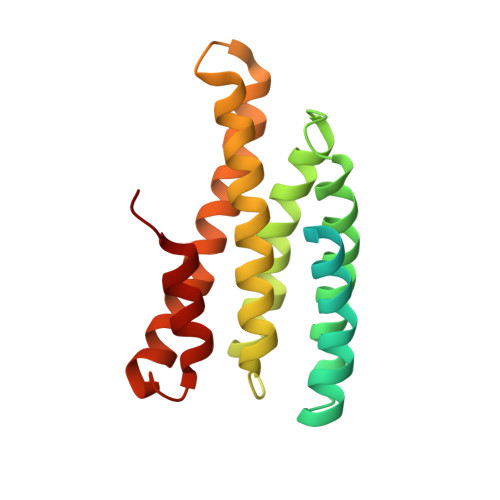Structural analysis of conserved oligomeric Golgi complex subunit 2
Cavanaugh, L.F., Chen, X., Richardson, B.C., Ungar, D., Pelczer, I., Rizo, J., Hughson, F.M.(2007) J Biol Chem 282: 23418-23426
- PubMed: 17565980
- DOI: https://doi.org/10.1074/jbc.M703716200
- Primary Citation of Related Structures:
2JQQ - PubMed Abstract:
The conserved oligomeric Golgi (COG) complex is strongly implicated in retrograde vesicular trafficking within the Golgi apparatus. Although its mechanism of action is poorly understood, it has been proposed to function by mediating the initial physical contact between transport vesicles and their membrane targets. An analogous role in tethering vesicles has been suggested for at least six additional large multisubunit complexes, including the exocyst, a complex essential for trafficking to the plasma membrane. Here we report the solution structure of a large portion of yeast Cog2p, one of eight subunits composing the COG complex. The structure reveals a six-helix bundle with few conserved surface features but a general resemblance to recently determined crystal structures of four different exocyst subunits. This finding provides the first structural evidence that COG, like the exocyst and potentially other tethering complexes, is constructed from helical bundles. These structures may represent platforms for interaction with other trafficking proteins including SNAREs (soluble N-ethylmaleimide factor attachment protein receptors) and Rabs.
Organizational Affiliation:
Department of Molecular Biology, Princeton University, Princeton, New Jersey 08544, USA.














